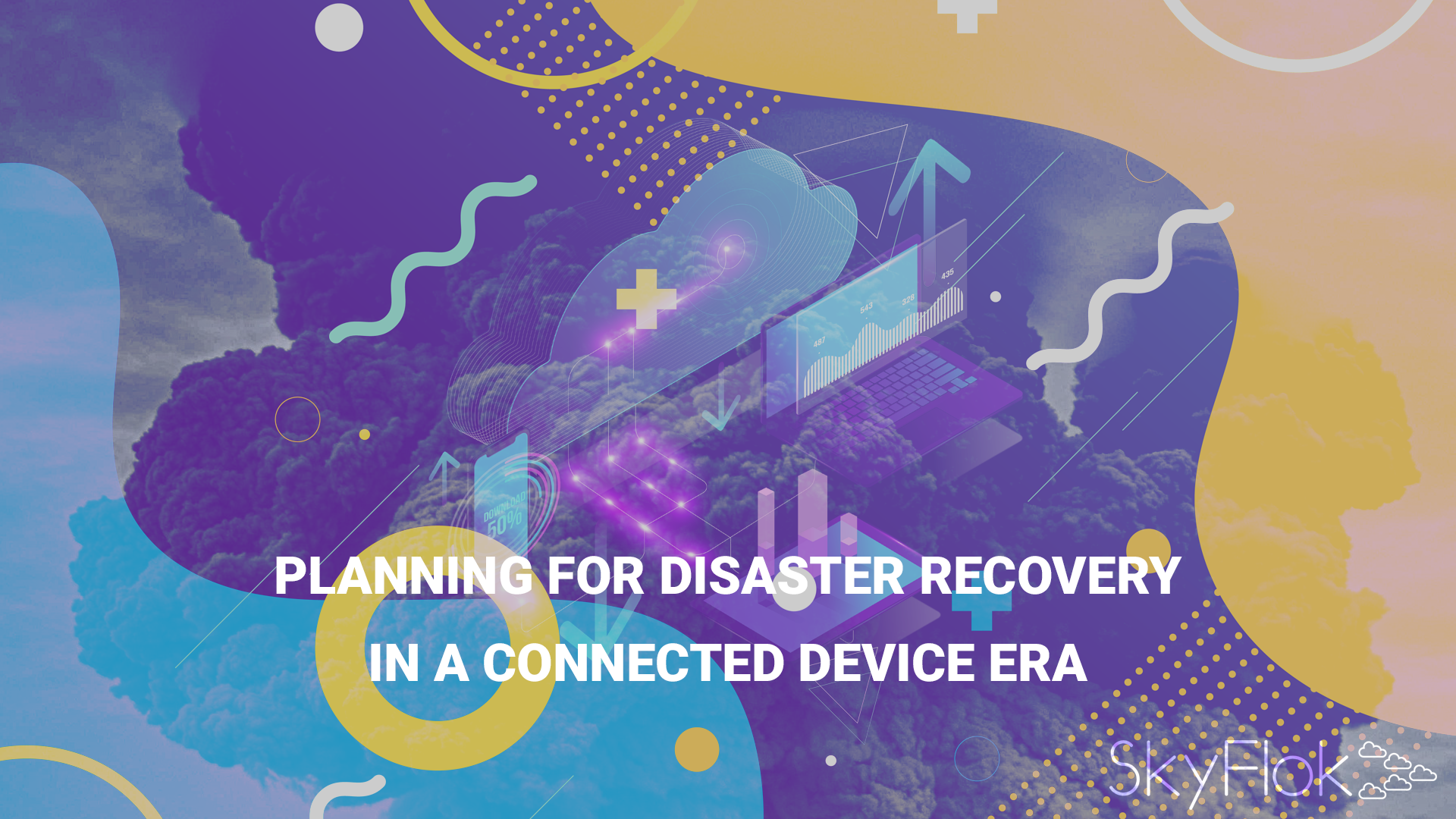In an highly regulated era, having a strong data recovery plan can help a business avoid both costly fines and data management issues.
With SkyFlok, you get a disaster recovery plan that increases data accessibility and privacy and helps you comply with privacy regulations. We spread your data across multiple vendors and locations to make sure that it is protected from being lost to natural disasters or temporary failures. This also protects you from downtime at individual providers.
Do not let your organization fail to devise a disaster recovery plan and avoid the sanctions for non-compliance with GDPR with SkyFlok!
Between the proliferation of unstructured data and seasonal natural disasters, data storage professionals are prioritizing disaster recovery (DR) more than ever before. However, the concerns don’t just stop there: new regulations such as the General Data Protection Regulation (GDPR) are creating new compliance challenges.
Summer months present the perfect time to revamp your DR program. Here are some ideas to consider when you revisit your plan:
Planning for a Compliance Era
The GDPR officially rolled out earlier this year in an effort to strengthen and unify data protection for EU consumers, while also protecting the exportation of personal data outside of Europe. The regulation brings tougher requirements for organizations that store “personally identifiable data,” such as names, photographs and addresses. For storage professionals, this means rethinking the way they are managing this type of data.
To meet the compliance requirements, storage professionals must first understand what personal data exists within their organization. They can start by identifying where the data is created, where it resides and who owns it. In addition, companies should consider participating in a regular data audit to help determine what personal data exists. This way they can review which applications have access to these details and figure out how to make the access process more compliant. Resulting policies can then be put in place to secure the data and ensure compliance with GDPR regulations. As part of your DR plan, it’s also crucial to ensure that your system is continuously operational for an extended length of time – otherwise known as high availability (HA).
Preparing for Emerging Technologies
More enterprises are investing in connected devices, but they aren’t prepared for the data management challenges that come with them. These IoT devices can capture detailed information much faster and effectively than traditional IT systems. However, they are also increasing the amount of unstructured data. For example, new aircrafts now contain as many as 10,000 sensors on each wing. That’s 20,000 sensors transmitting data from just the wings of the aircraft. The expansion of IoT device data and usage will only continue to grow as other industries continue to see its benefits, which is why storage professionals must prepare for these challenges.
In addition to the storage problems, there are also greater security risks involved with connected devices as many of them (i.e., wearables) were not created with these concerns in mind. It becomes crucial for a connected enterprise to establish a disaster recovery plan that is inclusive of these new vulnerabilities. In this plan, consider if all the data being analyzed from your connected devices needs to be saved. That will help reduce the amount of data and potential security threats.
Uncovering Testing Environment Threats:
For IT professionals, it is extremely valuable to conduct regular disaster recovery tests. However, the complexities of the testing process and its cost can make it a second-tier priority at times. Rapid data growth only amplifies this issue. According to a survey conducted by Statista, many organizations wishing to deploy a test environment are challenged by the multiple versions of testing environments they have. In addition, 48 percent were unable to manage the needs of test environments, such as network and service virtualization facilities. Without a solid testing environment, it is challenging to create a proper disaster recovery plan.
Disaster recovery is a crucial part of any IT operation. New challenges will arise each year, and IT teams need to be adaptable and ready to address them. Understanding the potential challenges and identifying the people, skills and technology to address them is an important first step.







